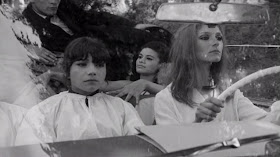
The end of the Boris Karloff Blogathon.

BORIS KARLOFF BLOGATHON
SCHEDULED PARTICIPANTS:
Acidemic
An Actor's Notebook
Andrew's Weekly Musings
Another Old Movie Blog
Apocalypse Later
Arbogast on Film
Badabing!
Baking with Medusa
Basement Screams
Behind the Couch
Black Hole DVD Reviews
Blogue Macabre
Branded in the 80's
Caffeinated Joe
Caftan Woman
Cavalcade of Awesome
Cinema Styles
Cinematografo dei trash
Classic-Horror.com
Contingencies
Cool-Mo-Dee
Daedalus Howell
Day of the Woman
Deadlicious
Deadly Movies
Detours
Dollar Bin Horror
Draculand
Dravens Tales from the Crypt
El inconsistente
Fear Fragments
Fernando Rojas on Twitter
Film of the Year
Flickhead
Gary's Goods
Greenbriar Picture Shows
Halloween Shindig 1965
Hammer and Beyond
Heart in a Jar
Hunting Monsters
Iain Maynard
Igloo of the Uncanny
John Rozum
John's Forbidden Planet
Kirdoodle
L.S.D. - Letras Sin Desperdicio
Lost Eyeways
Love Train for the Tenebrous Empire
Mad Mad Mad Mad Movies
Magia Posthuma
Martin Powell
Men's Adventure Magazines
Monster Crazy
Monster Land
Mother Firefly's Faster Pussycats
MovieFanFare
My Illustrative Life
My Two Yen Worth
MyBriefs.com
Need Coffee dot com
No More Ghostly Games
Obscure Hollow
Oklahoma Film Critics Circle
Only the Cinema
Orange and Black
Ormsby's Cinema Insane Blog
Panic on the 4th of July
Para Abnormal
Peeping Tom
Periodic Circumspection
Poe Forward's Poe Blog
Popcorn Monster
Psychobabble
Radiation-Scared Reviews
Rattigan Writes
Raven Faes Creations
Realm of Ryan
Reanimated Rags
Rob Kelly Illustration
Roque Madrid
Scaglie
Scared Silly
Screamstress
Shades of Grey
Shadowplay
Six Shooter
Skræk og Rædsel
Sleaze Blender
Teaessare Illustration and Design
Tedwrd
The Amazing Movie Show
The Boris Karloff Collection
The Captain's Ramblings
The Cathode Ray Mission
The Drunken Severed Head
The Futurist
The Groovy Age of Horror
The Horrors of It All
The House that Dripped Blog
The Kind of Face You Hate
The Ladies and Gents Auxiliary
The Lightning Bug's Lair
The Paradise of Horror
The Roads of Autumn Dusk
The Sci-Fi Block
The Vault of Horror
The Zed Word
Things That Don't Suck
This Guy Over Here
Thrilling Days of Yesteryear
Vade retro me satana
Weird Hollow
Who Killed Orrin Grey?
Woopitydooart
Wouldn't You Like To See Something Strange?
Writer By Night
You're Only As Good As Your Last Picture
Zombos Closet of Horror
THE BORIS KARLOFF BLOGATHON: Day Seven
Fonts: Frankensteinia





























































